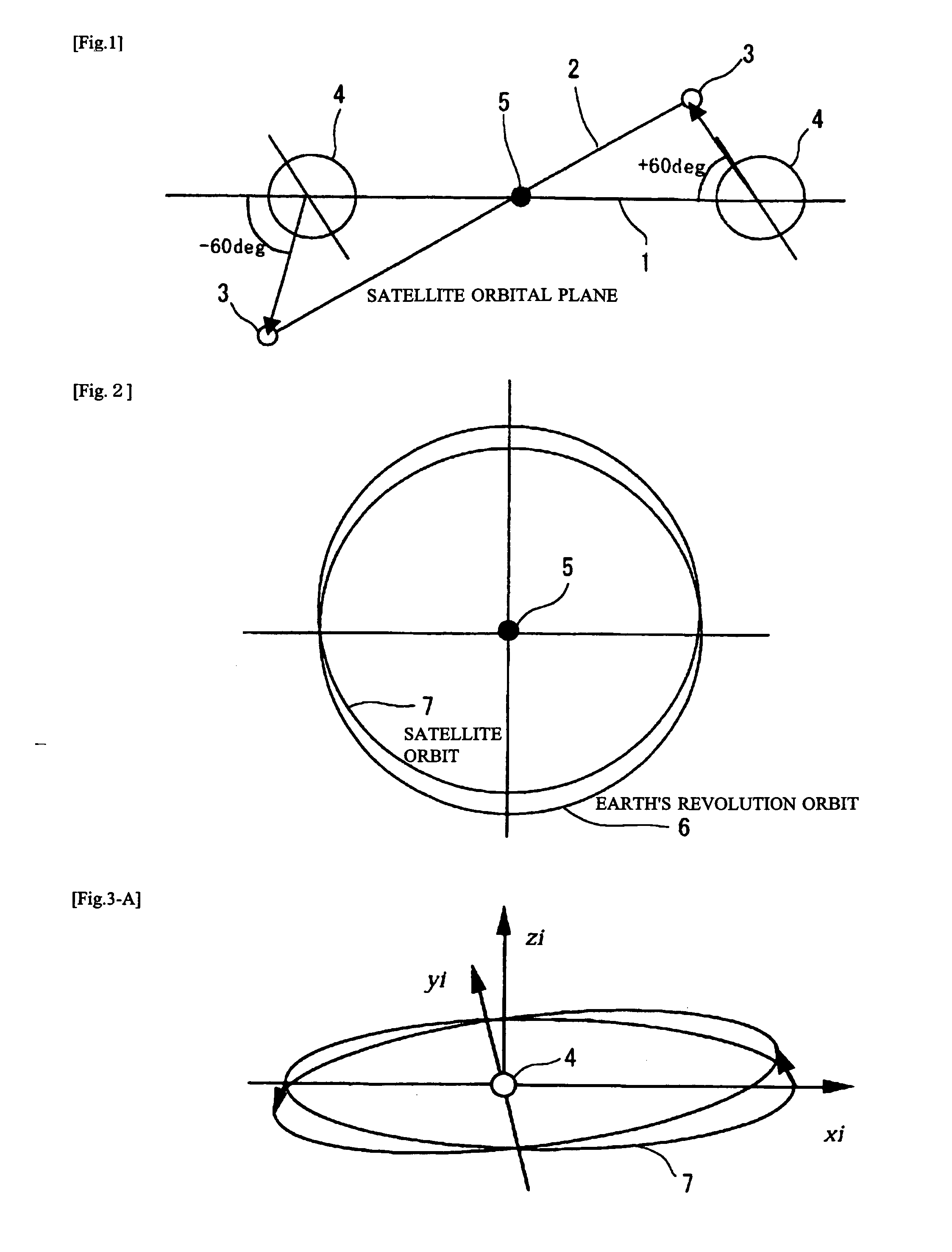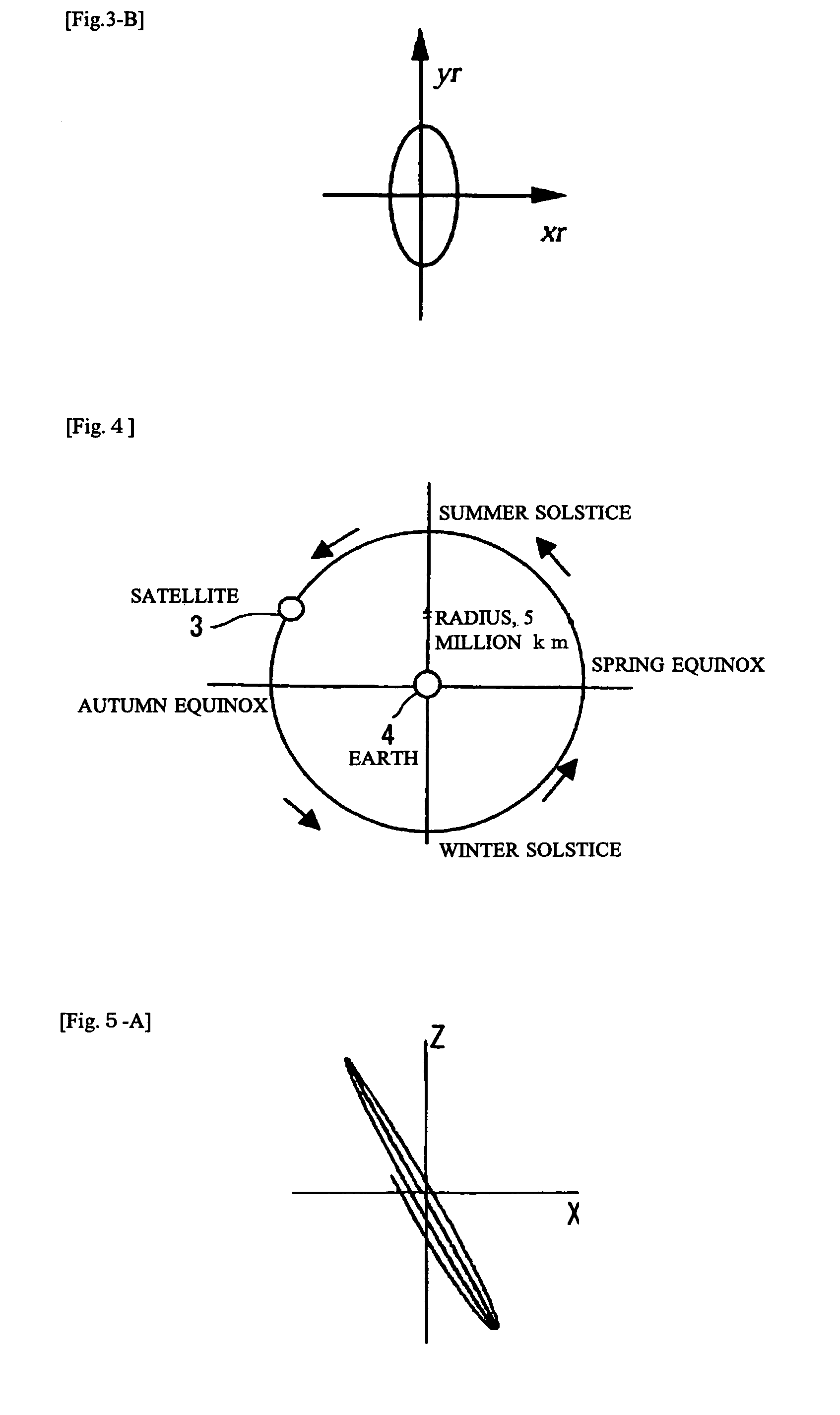Ultrahigh altitude sun-synchronous orbit satellite system
a satellite system and high-altitude technology, applied in the field of ultra-high-altitude sun-synchronous orbit satellite systems, can solve the problems of inability to meet the sun-synchronous condition of high-altitude orbits, inability to avoid thermal radiation input from the earth, and inability to achieve long-period orbits, etc., to achieve high quality, increase distance, and high accuracy
- Summary
- Abstract
- Description
- Claims
- Application Information
AI Technical Summary
Benefits of technology
Problems solved by technology
Method used
Image
Examples
Embodiment Construction
[0037]Hereinafter, the best embodiments of the present invention are described with reference to the drawings.
[0038]The key point of the present invention is to insert a satellite into an interplanetary orbit in the vicinity of the earth to obtain sun-synchronous conditions in accordance with a geometrical relation.
[0039]Specifically, regarding the satellite of the present invention, a satellite 3 is inserted into an interplanetary orbit so that the satellite 3 revolves around the sun 5 at a period of one year such that a satellite orbital plane 2 is inclined to an ecliptic plane 1 in an ecliptic coordinates, as shown in FIG. 1, and ideally the satellite lies on the plane inclined by 60 degrees or −60 degrees relatively to the revolving plane of the earth when viewed from the center of the earth 4. The orbital motion of the satellite which has the same rotation period as the revolution period of the earth, i.e. the same orbit semi-major axis distance, and has a different eccentricit...
PUM
 Login to View More
Login to View More Abstract
Description
Claims
Application Information
 Login to View More
Login to View More - R&D
- Intellectual Property
- Life Sciences
- Materials
- Tech Scout
- Unparalleled Data Quality
- Higher Quality Content
- 60% Fewer Hallucinations
Browse by: Latest US Patents, China's latest patents, Technical Efficacy Thesaurus, Application Domain, Technology Topic, Popular Technical Reports.
© 2025 PatSnap. All rights reserved.Legal|Privacy policy|Modern Slavery Act Transparency Statement|Sitemap|About US| Contact US: help@patsnap.com



